Home
- ▶
- Heaters/Source
- ▶
- Agilent Heaters and SensorsMass Spectrometry, Scientific Supplies & ManufacturingScientific Instrument Services 5973 Source Heater Tamper Resistant Allen Wrench 5973/5975 Quad Sensor 5985 Source Heater Assembly Agilent Interface Heater Assembly 5971 Interface Heater

- ▶
- Reference Material on Instrumentation (This Page)
AutoProbe
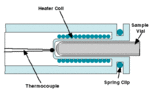 Article - A High Temperature Direct Probe for a Mass Spectrometer The use of a direct insertion probe is a common method for the introduction of samples into the mass spectrometer.
Article - A High Temperature Direct Probe for a Mass Spectrometer The use of a direct insertion probe is a common method for the introduction of samples into the mass spectrometer.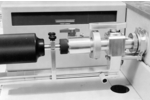 Design of a Direct Exposure Probe and Controller for use ona Hewlett-Packard 5989 Mass Spectrometer The most common method for the direct introduction of samples into a mass spectrometer is routinely accomplished with the use of a direct insertion probe (DIP).
Design of a Direct Exposure Probe and Controller for use ona Hewlett-Packard 5989 Mass Spectrometer The most common method for the direct introduction of samples into a mass spectrometer is routinely accomplished with the use of a direct insertion probe (DIP).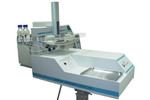 SIS AP1000 AutoProbe™ Automated direct insertion probe for the Thermo TRACE™ mass spectrometer. Samples in about 3 minutes. Open Access and Xcalibur™; integration.
SIS AP1000 AutoProbe™ Automated direct insertion probe for the Thermo TRACE™ mass spectrometer. Samples in about 3 minutes. Open Access and Xcalibur™; integration. SIS AP1000 AutoProbe™ Automated direct insertion probe for the Thermo TRACE™ mass spectrometer. Samples in about 3 minutes. Open Access and Xcalibur™; integration.
SIS AP1000 AutoProbe™ Automated direct insertion probe for the Thermo TRACE™ mass spectrometer. Samples in about 3 minutes. Open Access and Xcalibur™; integration.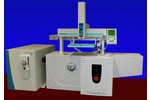 SIS AP2000 AutoProbe™ - Description of System The AutoProbe™ System is an Automated Direct Exposure Probe (DEP) for the Finnigan PolarisQ™ and TRACE DSQ™ Mass Spectrometer Systems.
SIS AP2000 AutoProbe™ - Description of System The AutoProbe™ System is an Automated Direct Exposure Probe (DEP) for the Finnigan PolarisQ™ and TRACE DSQ™ Mass Spectrometer Systems. SIS AP1000 AutoProbe™ Automated direct insertion probe for the Thermo TRACE™ mass spectrometer. Samples in about 3 minutes. Open Access and Xcalibur™; integration.
SIS AP1000 AutoProbe™ Automated direct insertion probe for the Thermo TRACE™ mass spectrometer. Samples in about 3 minutes. Open Access and Xcalibur™; integration. SIS AP1000 AutoProbe™ Automated direct insertion probe for the Thermo TRACE™ mass spectrometer. Samples in about 3 minutes. Open Access and Xcalibur™; integration.
SIS AP1000 AutoProbe™ Automated direct insertion probe for the Thermo TRACE™ mass spectrometer. Samples in about 3 minutes. Open Access and Xcalibur™; integration.
HPP7 MS Probe (597X)
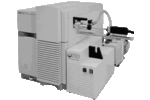 HPP7: Direct Probe Electronics Console Description of the electronics control for the probe of the HP5973 MSD
HPP7: Direct Probe Electronics Console Description of the electronics control for the probe of the HP5973 MSD HPP7: Direct Probe for the Agilent (HP) 5973/5975 MSD Description of the direct probe for the HP 5973 including ramp rates, temperature limits and size
HPP7: Direct Probe for the Agilent (HP) 5973/5975 MSD Description of the direct probe for the HP 5973 including ramp rates, temperature limits and size HPP7: HP Direct Probe Application Notes Index page listing the application notes on the use of the HP mass spec probes
HPP7: HP Direct Probe Application Notes Index page listing the application notes on the use of the HP mass spec probes HPP7: Installation Directions for the Direct Probe Installation directions for the direct probe and probe inlet system on the HP 5973 MSD
HPP7: Installation Directions for the Direct Probe Installation directions for the direct probe and probe inlet system on the HP 5973 MSD HPP7: Side Cover for the HP 5973 MSD The side panel is used to cover the side of the HP 5973 MSD when the GC is removed
HPP7: Side Cover for the HP 5973 MSD The side panel is used to cover the side of the HP 5973 MSD when the GC is removed HPP7: Support The latest software version is 2.2.2 (2004-12-22) and is known to be compatible with ChemStation up to G1701DA D.03.00. The HPP7 ChemStation integrated mode is not (currently) supported on the G1701EA ChemStation, but the HPP7 can be used in standalone mode (independent of ChemStation). Software Upgrades Existing HPP7 customers can freely download upgrades to the "ProbeDirect" software for controlling the HPP7 from the PC. The latest version can be downloaded from the below link: probedirect-2.2...
HPP7: Support The latest software version is 2.2.2 (2004-12-22) and is known to be compatible with ChemStation up to G1701DA D.03.00. The HPP7 ChemStation integrated mode is not (currently) supported on the G1701EA ChemStation, but the HPP7 can be used in standalone mode (independent of ChemStation). Software Upgrades Existing HPP7 customers can freely download upgrades to the "ProbeDirect" software for controlling the HPP7 from the PC. The latest version can be downloaded from the below link: probedirect-2.2... HPP7: Probe Inlet System for the Agilent (HP)
5973 and 5975 MSD with Automatic Indexed Stops Description of the automatic indexing and sealing system for the HP 5973 probe.
HPP7: Probe Inlet System for the Agilent (HP)
5973 and 5975 MSD with Automatic Indexed Stops Description of the automatic indexing and sealing system for the HP 5973 probe. HPP7: Theory of Operation of the Direct Probe and Probe Inlet
System Complete pictorial description of the operation of the direct probe for the HP 5973 MSD
HPP7: Theory of Operation of the Direct Probe and Probe Inlet
System Complete pictorial description of the operation of the direct probe for the HP 5973 MSD
Thermal Desorption
 Direct Thermal Extraction Thermal Desorption Application Notes [apnotes=td_dte]
Direct Thermal Extraction Thermal Desorption Application Notes [apnotes=td_dte] Environmental Thermal Desorption Application Notes [apnotes=td_environmental]
Environmental Thermal Desorption Application Notes [apnotes=td_environmental] Food Science Thermal Desorption Application Notes [apnotes=td_food]
Food Science Thermal Desorption Application Notes [apnotes=td_food] Forensic Thermal Desorption Application Notes [apnotes=td_forensic]
Forensic Thermal Desorption Application Notes [apnotes=td_forensic] GC Cryo-Trap Application Notes [apnotes=cryo]
GC Cryo-Trap Application Notes [apnotes=cryo] Headspace Application Notes [apnotes=td_headspace]
Headspace Application Notes [apnotes=td_headspace] Purge & Trap Thermal Desorption Application Notes [apnotes=td_purgetrap]
Purge & Trap Thermal Desorption Application Notes [apnotes=td_purgetrap]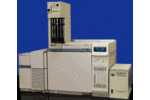 Theory of Operation of the AutoDesorb® System The AutoDesorb System from SIS
Theory of Operation of the AutoDesorb® System The AutoDesorb System from SIS AutoDesorb Notes for SIS Dealers Required Components for a System When taking an order for a thermal desorption system, the following items are required. If they are not on your order we will be contacting you or your customer to remind you that they should be ordered in order for the customer to make efficient use of the AutoDesorb System. Part Number Description 786000 AutoDesorb System, Model 2000 786030 Accessory Kit, Tubes, Needles, Seals 786100 Installation and Training 786200 or 786210 Agilent 6890 Installation Kit Agile...
AutoDesorb Notes for SIS Dealers Required Components for a System When taking an order for a thermal desorption system, the following items are required. If they are not on your order we will be contacting you or your customer to remind you that they should be ordered in order for the customer to make efficient use of the AutoDesorb System. Part Number Description 786000 AutoDesorb System, Model 2000 786030 Accessory Kit, Tubes, Needles, Seals 786100 Installation and Training 786200 or 786210 Agilent 6890 Installation Kit Agile... Adsorbent Resin Application Notes [apnotes=td_adsorbent] See also Adsorbent Resins Breakthrough Volume Data.
Adsorbent Resin Application Notes [apnotes=td_adsorbent] See also Adsorbent Resins Breakthrough Volume Data.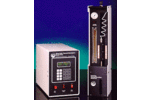 Installation of the Short Path Thermal Desorption System on Agilent (HP) and Other GCs Site Preparation Installation of the SPTD on Varian 3400 HP 5890 and Other GCs Careful adherence to these installation instructions should allow the user to install the SPTD system on the HP 5890 and other gas chromatographs. Be certain that you read through the instructions completely and acquire all the tools required before proceeding. The section on site preparation found in this manual should also be read through completely to be sure that you are ready for installation. For further help i...
Installation of the Short Path Thermal Desorption System on Agilent (HP) and Other GCs Site Preparation Installation of the SPTD on Varian 3400 HP 5890 and Other GCs Careful adherence to these installation instructions should allow the user to install the SPTD system on the HP 5890 and other gas chromatographs. Be certain that you read through the instructions completely and acquire all the tools required before proceeding. The section on site preparation found in this manual should also be read through completely to be sure that you are ready for installation. For further help i...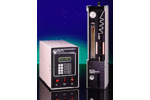 Installation of the Short Path Thermal Desorption System on a Varian 3400 GC The entire S.P.T.D. system can be installed by the end user. However, Scientific Instrument Services also provides installation by S.I.S. qualified staff.
Installation of the Short Path Thermal Desorption System on a Varian 3400 GC The entire S.P.T.D. system can be installed by the end user. However, Scientific Instrument Services also provides installation by S.I.S. qualified staff.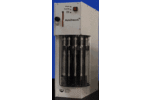 AutoDesorb® System Development Team AutoDesorb Development Team
AutoDesorb® System Development Team AutoDesorb Development Team Thermal Desorption Applications and Reference Materials Analysis of low moisture solid matrix samples by thermally extracting the volatile and semi-volatile organics directly from the solid matrix without the use of solvents or other sample preparation.
Thermal Desorption Applications and Reference Materials Analysis of low moisture solid matrix samples by thermally extracting the volatile and semi-volatile organics directly from the solid matrix without the use of solvents or other sample preparation. Installation of the Short Path Thermal Desorption System - TD5 SITE PREPARATION Space Requirements The Short Path Thermal Desorption System is a compact, self contained injection system and desorption system that requires a minimum amount of space. The system is designed only for top injecting GC systems. The Thermal Desorption Unit sits directly over the injection port of the Gas Chromatograph. The base of the Thermal Desorption Unit is only 5.5 inches wide x 6.5 inches deep and the overall height is 22 inches. The Electronics Control System is 7 inches w...
Installation of the Short Path Thermal Desorption System - TD5 SITE PREPARATION Space Requirements The Short Path Thermal Desorption System is a compact, self contained injection system and desorption system that requires a minimum amount of space. The system is designed only for top injecting GC systems. The Thermal Desorption Unit sits directly over the injection port of the Gas Chromatograph. The base of the Thermal Desorption Unit is only 5.5 inches wide x 6.5 inches deep and the overall height is 22 inches. The Electronics Control System is 7 inches w... Part I - Design & Operation of the Short Path ThermalDesorption System Part I - Design & Operation of the Short Path Thermal Desorption System
Part I - Design & Operation of the Short Path ThermalDesorption System Part I - Design & Operation of the Short Path Thermal Desorption System
Cryo-Trap
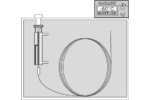 Installation Instructions for the Model 951 GC Cryo-Trap on
the HP 5890 Series GC Site Preparation
Installation Instructions for the Model 951 GC Cryo-Trap on
the HP 5890 Series GC Site Preparation Installation Instructions for the Model 961 GC Cryo-Trap on
the HP 5890 Series GC A low pressure (<50 psi) tank must be utilized to supply nitrogen in liquid phase to the remote liquid nitrogen valve.
Installation Instructions for the Model 961 GC Cryo-Trap on
the HP 5890 Series GC A low pressure (<50 psi) tank must be utilized to supply nitrogen in liquid phase to the remote liquid nitrogen valve.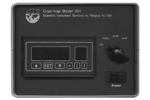 Operation of the Model 951/961 GC Cryo-Trap The electronics Console front panel consists of a main power switch, a rotary select switch and the digital dual temperature controller module.
Operation of the Model 951/961 GC Cryo-Trap The electronics Console front panel consists of a main power switch, a rotary select switch and the digital dual temperature controller module.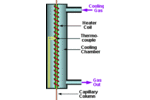 SIS GC Cryo Traps - Theory of Operation The Cryo-Trap consists of a small heating/cooling chamber.
SIS GC Cryo Traps - Theory of Operation The Cryo-Trap consists of a small heating/cooling chamber.
NIST / SIMION Software
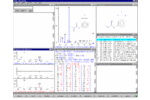 NIST/EPA/NIH Mass Spectral Enhancements - 1998 version
NIST/EPA/NIH Mass Spectral Enhancements - 1998 version
(NIST98)By O. David Sparkman Evaluated and Expanded for Quality Figure 1. The NIST Mass Spectral Search Program with all seven of its Windows displayed. Added Features for Quality Prior to 1998, it had been six years since NIST released its last version of the NIST/EPA/NIH Mass Spectral Library. During that period, NIST has completed a ten-year project to completely evaluate the Library. As this process progressed, NIST was able to generate a number of spectra and acquire several important collections o...
 SIMION 3D Ion Optics Class Adaptas/SIS has in the past offered a one or two day course on the use and application of the SIMION 3D Ion Optics Simulation Software. No classes are currently formally scheduled at this time.
SIMION 3D Ion Optics Class Adaptas/SIS has in the past offered a one or two day course on the use and application of the SIMION 3D Ion Optics Simulation Software. No classes are currently formally scheduled at this time.
Cleaning
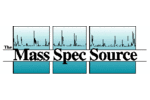 Mass Spectrometer Source Cleaning Methods Note: This article on MS source cleaning methods was published in the SIS Mass Spec Source Newsletter. Please instead see MS Tips: Mass Spectrometer Source Cleaning Methods for the latest version of this article. Scientific Instrument Services, Inc. June 2002 Mass Spectrometer Source Cleaning Methods Revised 6/1/02 Copyright: Scientific Instrument Services, June 2002, All rights reserved by John J. Manura, Scientific Instrument Services, Ringoes, NJ The following is a compilation of the procedu...
Mass Spectrometer Source Cleaning Methods Note: This article on MS source cleaning methods was published in the SIS Mass Spec Source Newsletter. Please instead see MS Tips: Mass Spectrometer Source Cleaning Methods for the latest version of this article. Scientific Instrument Services, Inc. June 2002 Mass Spectrometer Source Cleaning Methods Revised 6/1/02 Copyright: Scientific Instrument Services, June 2002, All rights reserved by John J. Manura, Scientific Instrument Services, Ringoes, NJ The following is a compilation of the procedu... MS Tip: Mass Spectrometer Source Cleaning Procedures Revised 6/1/02 Copyright: Scientific Instrument Services, June 2002, All rights reserved by John J. Manura, Scientific Instrument Services, Ringoes, NJ The following is a compilation of the procedures used by Scientific Instrument Services for the cleaning of mass spectrometer sources over the last 25 years. This article incorporates the current techniques used at SIS as well as procedures reported in our Mass Spec Handbook of Service (published in 1983 and now out of print), articles published ...
MS Tip: Mass Spectrometer Source Cleaning Procedures Revised 6/1/02 Copyright: Scientific Instrument Services, June 2002, All rights reserved by John J. Manura, Scientific Instrument Services, Ringoes, NJ The following is a compilation of the procedures used by Scientific Instrument Services for the cleaning of mass spectrometer sources over the last 25 years. This article incorporates the current techniques used at SIS as well as procedures reported in our Mass Spec Handbook of Service (published in 1983 and now out of print), articles published ...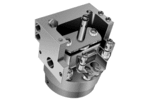 Mass Spec Source Cleaning Procedures John J. Manura Scientific Instrument Services Finnigan 3200, HP5971 and HP5970 Sources In Volume I of the Mass Spec Handbook of Service (Scientific Instrument Services, #MSHS-1, 1983), we published a series of articles on the cleaning of mass spectrometer sources and other mass spectrometer parts. These articles described a wide range of techniques and available equipment for the cleaning of metal parts, ceramics and other insulating materials. Over the last 10 years, we have refined several of ...
Mass Spec Source Cleaning Procedures John J. Manura Scientific Instrument Services Finnigan 3200, HP5971 and HP5970 Sources In Volume I of the Mass Spec Handbook of Service (Scientific Instrument Services, #MSHS-1, 1983), we published a series of articles on the cleaning of mass spectrometer sources and other mass spectrometer parts. These articles described a wide range of techniques and available equipment for the cleaning of metal parts, ceramics and other insulating materials. Over the last 10 years, we have refined several of ...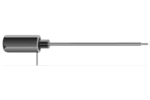 Micro-Mesh® Abrasive Sheets Article on Micro-Mesh®
Micro-Mesh® Abrasive Sheets Article on Micro-Mesh®
New Era Syringe Pump
 Research Papers Using New Era Syringe Pump Systems Research Papers using New Era Syringes and Plumbing Accessories
Research Papers Using New Era Syringe Pump Systems Research Papers using New Era Syringes and Plumbing Accessories
Calibration
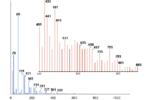 EI Positive Ion Spectra for Perfluorokerosene
EI Positive Ion Spectra for Perfluorokerosene
(PFK)Data Courtesy Dr. Thomas Hartman, Center for Advance Food Technology, Rutgers University, New Brunswick, NJ PFK Calibration Compound For Mass Spectrometers m/z Rel. Abundance Formula Exact Mass ------- -------------- ------- ---------- 18.01 30.00 28.01 50.00 31.0 3.80 CF 30.99840 39.96 1.70 51.00 6.70 69.00 100.00 C1F3 68.99521 81.00 0.50 C2F3 80.99521 84.97 1.00 93.00 3.30 C3F3 92.99521 99.99 5.60 C2F4 99.99361 118.99 26.40 C2F5 118.99201 130.99 24.00 C3F5 118.99201 142.99 1.90 C4F5 142.99201...
Bottles
 Cap Liner Information Note: the selection of the liner is by far the most important step which will determine the success or failure of your package. Wheaton recommends the the following criteria for liner selection: Conformity to regulations - EPA and PDA Chemical resistance Sealing ability against moisture/gas gain or loss, leakage, pressure buildup, and corrosive packaging Avoidance of "overpackaging" - selecting the most economical liner for the required applications Material Description Applications Poly-vinyl ...
Cap Liner Information Note: the selection of the liner is by far the most important step which will determine the success or failure of your package. Wheaton recommends the the following criteria for liner selection: Conformity to regulations - EPA and PDA Chemical resistance Sealing ability against moisture/gas gain or loss, leakage, pressure buildup, and corrosive packaging Avoidance of "overpackaging" - selecting the most economical liner for the required applications Material Description Applications Poly-vinyl ... How do I convert between fluid oz and milliliters? 1 fluid oz is approximately 30 mL.
How do I convert between fluid oz and milliliters? 1 fluid oz is approximately 30 mL.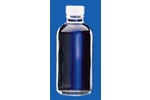 Which bottle material should I choose? Clear and Amber Glass in different types.
Which bottle material should I choose? Clear and Amber Glass in different types. Which bottle mouth should I choose? Wide: Allows access to container contents with pipette, spatula, and other sampling instruments. Narrow: Prevents accidental splurging when pouring liquid samples.
Which bottle mouth should I choose? Wide: Allows access to container contents with pipette, spatula, and other sampling instruments. Narrow: Prevents accidental splurging when pouring liquid samples. The Bottle Selection Guide This guide provides information useful in selecting bottles for your applications. Much of this information is provided courtesy of Wheaton Science Products. Caps Capacity Material Mouth
The Bottle Selection Guide This guide provides information useful in selecting bottles for your applications. Much of this information is provided courtesy of Wheaton Science Products. Caps Capacity Material Mouth
Gas Tank
 CGA Connections for Gas Tanks CGA Fittings for gas tanks cross reference
CGA Connections for Gas Tanks CGA Fittings for gas tanks cross reference
Old/Obsolete
 Chemical Reaction Interface Mass Spectrometry
Chemical Reaction Interface Mass Spectrometry
(CRIMS)The CRIMS technique allows stable isotopes to be used in a wide variety of tagging and tracing applications. In CRIMS, chromatography effluent is decomposed in a high-temperature microwave plasma and then reacted with a reactant gas. This results in a small number of well characterized polyatomic products whose isotopic ratios are measured by mass spectrometry in order to identify and quantify the presence of isotope tags, independent of chemical structure or environment.

